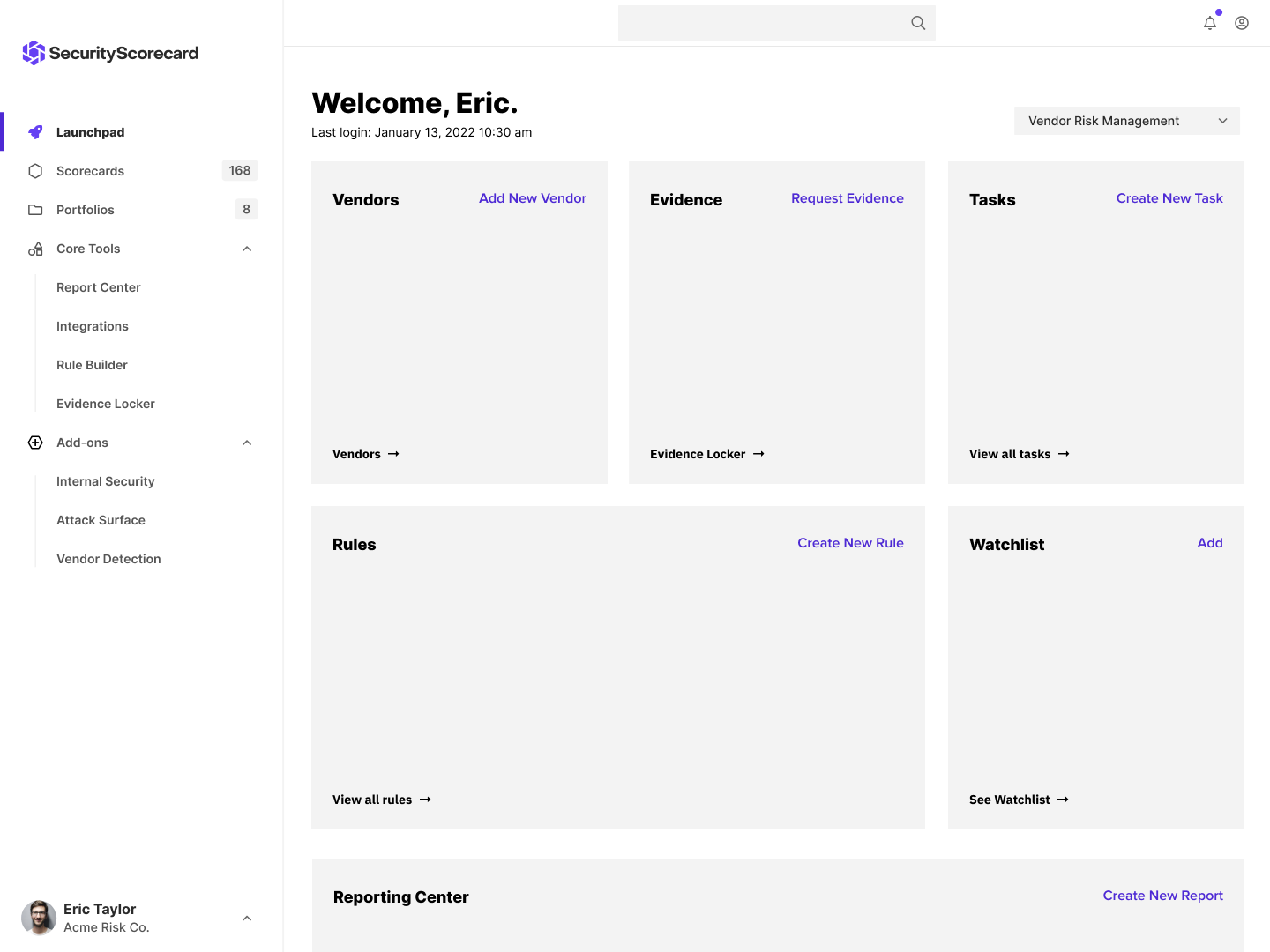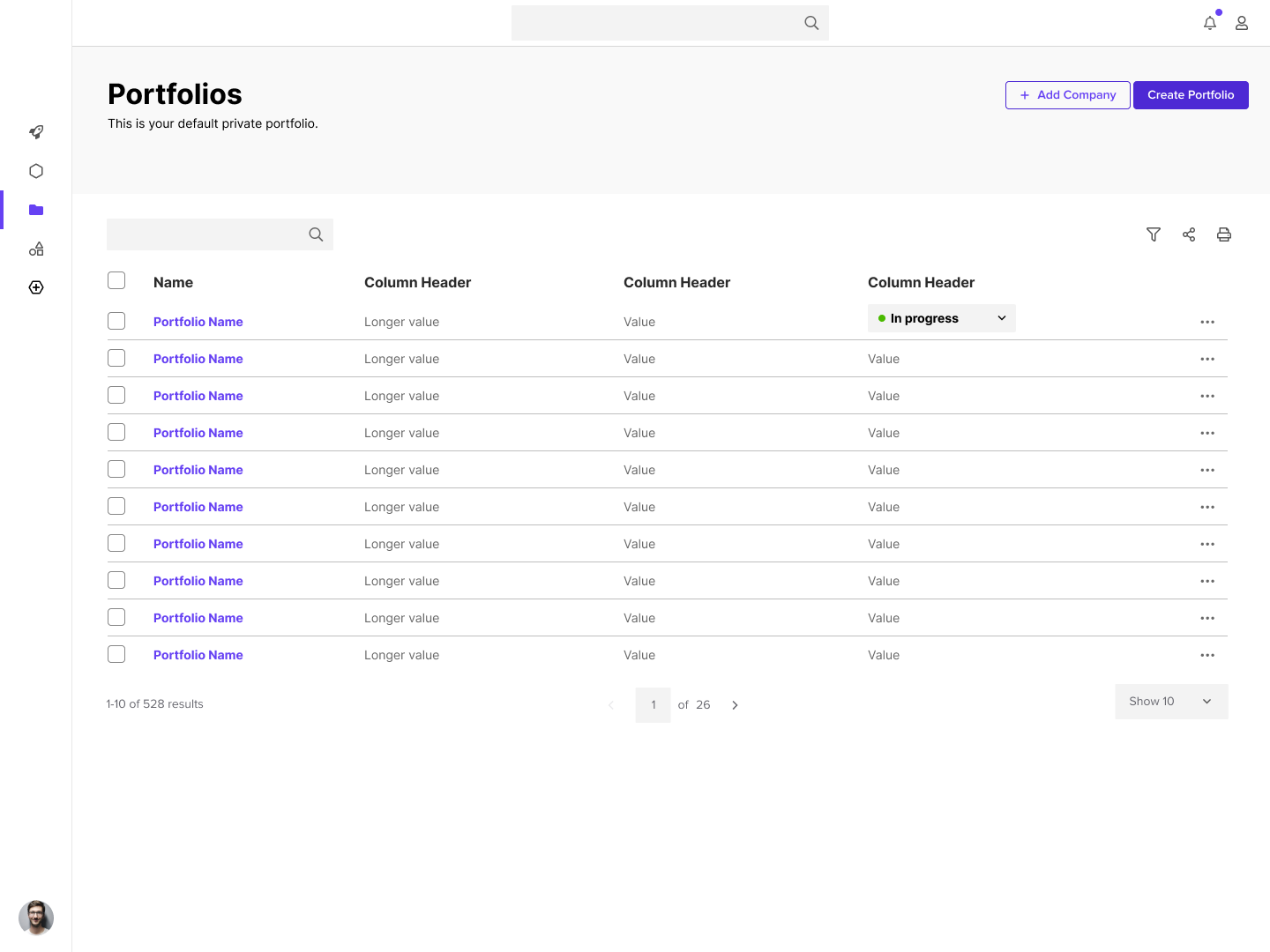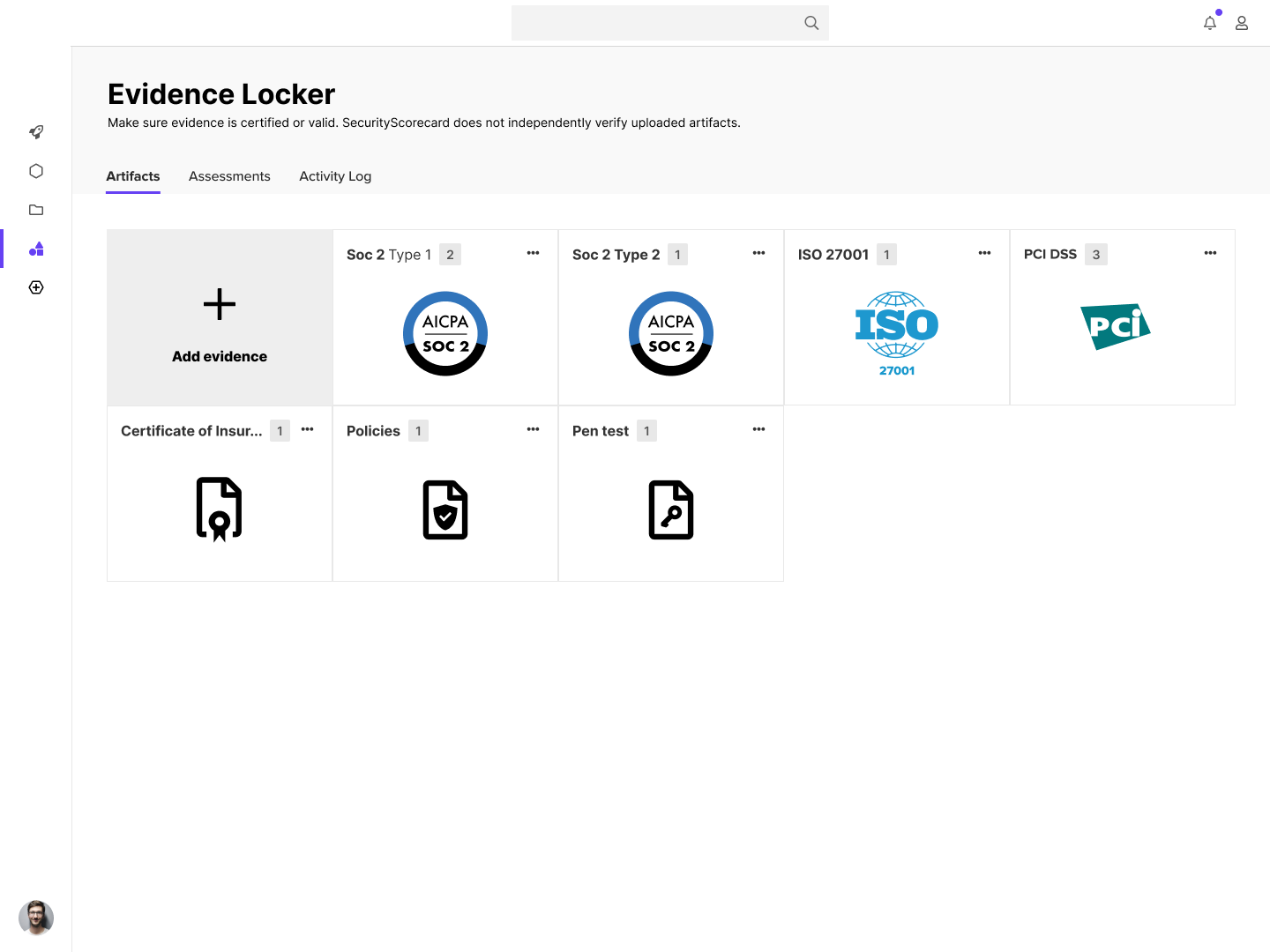Disrupting cybersecurity, with intention
YEAR
2022
DURATION
Ongoing
ROLE
Design Lead
PLATFORM
Web + Mobile
Background
SecurityScorecard (SSC) is an information security company which provides the capability to manage the security posture of, as well as monitor and mitigate risk, of a corporate entity and its vendors, partners and other third-party entities, using publicly available data and scanning techniques. At its core, organizations are scored using an academic, grade-based scale from A to F.
The customer pain points were common to rapidly maturing startups: Existing users had difficulty navigating the platform, due to the inexplicable content and lack of information architecture. The site was not mobile responsive. The backend code was deemed “spaghetti code” and “hanging by a thread” by developers who were spending full sprints addressing bugs instead of innovative and important new work. Iconography was inconsistent, between solid and line icons and icon styling. Breadcrumbs were present on some pages, but not others. Design appeared to be dated and lacked the sleek, modern and usable interface that users have become accustomed to. There was not unity to the company’s many excellent, but buried product verticals.
The growth at SSC was equally as chaotic, as the company grew from 250 to 500 within a year. The design team itself was scaling at a rapid clip, with 2 designers from 2018-2019, 6 in 2020 and 18, including design and design research, just one year later. In addition, SSC had announced plans to be traded publicly, so the platform became a massive priority.
BUSINESS GOALs
Create a modern and usable interface, which was intuitive and provided users with the information they needed to monitor and to mitigate their company’s risk easily and effectively.
DESIGN GOALS + CHALLENGES
Create new patterns for the design language system, scrubbing all existing components.
Providing an engaging experience that allows for flexibility and scalability.
Work with design research and Content Design to flesh out the IA
Being pulled in several directions, as lead designer on several other projects, but also managing a team of 4 designers.
Evangelizing the importance and validity of design research to the executive team.
SUCCESS METRIC
1 quarter: Redesigning and evolving the design system based on research findings.
1-2 years: Concurrently, rewriting the entire platform to stabilize and to enable needed functionality.
innovation around the clock
While working on a side hustle project with the Growth team to advance design standards, one of their team’s greatest objectives was to provide users with a personalized experience, tailored to the user’s needs. The first phase of this project was a login screen; the second a simplified onboarding experience and a customizable dashboard.
On one sleepless night (there are many), I had an epiphany based on the basic requirements for the login page I had been assigned to design and quickly mocked up a prototype of a simplified onboarding, with simple coachmarks. This was a radical departure to the existing experience. I created a screen recording of the concept. While executives seemed pleased upon presentation, it was dead on the water—and there was no movement over the next few weeks.
Weeks later, while working on a separate initiative with the Chief of Staff and the brilliant Product Manager from Growth, I happened to share a glimpse of the design. The Chief of Staff was thrilled with the concept and immediately presented the concept with the entire company.
Not more than a day later, the design team received the green light to move forward with research and a new design concept. The Growth team moved towards a new modular and customizable dashboard, for which I provided designs for, based on user needs, knowledge about the space, and feedback.
OUTCOME
The design research team began conducting studies with this design utilizing a robust prototype, which featured every combination of actions possible.
After undergoing several rounds of layoffs, the remaining design team members have continued the charge on implementing this exact design.





